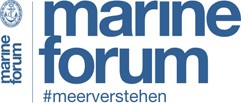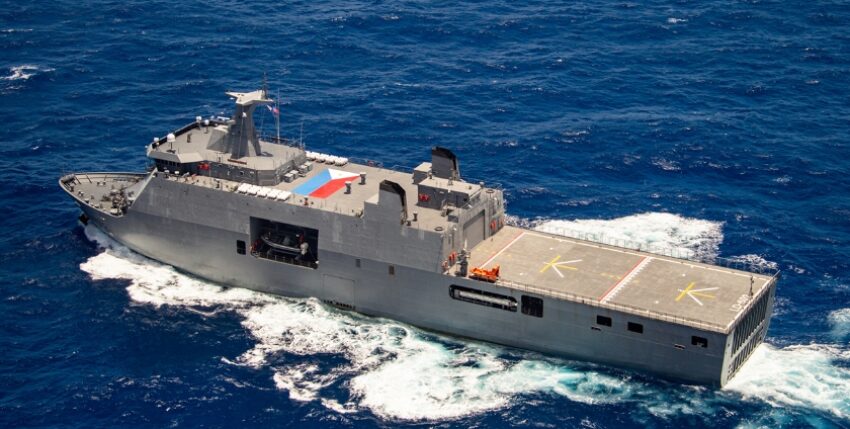The Makassar class was originally designed for the Indonesian navy. However, other buyers were quickly found for this cost-effective, successful model.
In recent years, a class of medium-sized amphibious landing ships of the Landing Platform Dock (LPD, amphibious transport dock) type has gained a dominant position in this ship segment in South East Asia and South America almost unnoticed by Western analysts. This is the Makassar class developed in South Korea, of which twelve units have now been completed and three more are being planned and built.
Forerunner hospital ship
In September 2003, the Indonesian navy signed a contract with the South Korean shipyard Daewoo International to build an amphibious landing ship of the LPD type for 35 million US dollars. The ship was built at Daesun Shipbuilding in Pusan, South Korea. The ship, named KRI Tanjung Dalpele, was 122 metres long, 22 metres wide and displaced 11,600 tonnes when fully loaded. Its floodable well deck offered space for two LCU and two LCVP landing craft and could embark 13 tanks and 507 marines. The hangar and flight deck had capacity for two Super Puma helicopters. After almost four years in service with the Indonesian Navy, the KRI Tanjung Dalpele was reclassified as a hospital ship and renamed KRI Dr Soeharso (990). Equipped with five operating theatres and six outpatient clinics, the KRI dr. Soeharso can care for up to 2,000 patients on board.
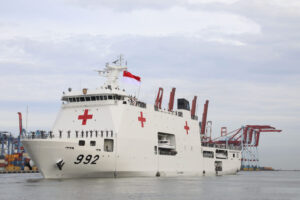
Based on the KRI Tanjung Dalpele/KRI Dr Soeharso, the Indonesian Navy ordered two more LPDs from the South Korean Daesun Shipbuilding & Engineering Co. for 150 million US dollars in December 2004. Two additional units were then to be built at PT PAL Indonesia in Surabaya on the Indonesian island of Java. The contract for this was signed on 28 March 2005. The two Korean-built units KRI Makassar (590) and KRI Surabaya (591) were launched on 7 December 2006 and 23 March 2007 and entered service on 29 April and 1 August 2007. With dimensions of 122 metres in length and 22 metres in width, they have a displacement of 12,400 tonnes when fully loaded. Up to 35 infantry vehicles can be accommodated on the transport decks and two LCVP landing craft on the well deck. The two units built in Surabaya are named KRI Banjarmasin (592) and KRI Banda Aceh (593). They were launched on 28 August 2008 and 19 March 2010 and were put into service on 28 November 2009 and 21 March 2011.
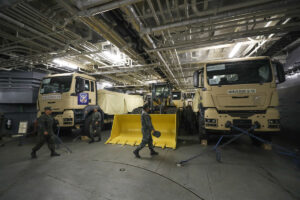
Transport hangar of the Pisco, photo: MoD Peru
The enlarged flight deck of these two units has space for five helicopters (two of which can be housed and maintained in a hangar). The Indonesian Navy was so pleased with the ship design that it ordered a fifth unit from PT Pal Indonesia on 17 January 2017. This was launched on 3 August 2018 in Surabaya and was commissioned on 21 January 2019 as the KRI Semarang (594). The ship served temporarily as a hospital ship during the coronavirus pandemic until it was replaced in this role by the next two Makassar-class ships. These two hospital ships KRI dr. Wahidin Sudirohusodo (991) and KRI dr. Radjiman Wedyodiningrat (992) were launched in Surabaya on 7 January 2021 and 15 August 2022 and were commissioned on 14 January 2022 and 19 January 2023. They are the sixth and seventh Indonesian units of the Makassar class and form the Sudirohusodo subclass. Due to their use as hospital ships, they do not have a floodable well deck.
Demand from abroad
The Philippine Navy selected a version of the Makassar class as a strategic sealift vessel for its strategic sea transport programme at the end of 2013. The corresponding construction contract for two units was concluded between the Philippine government and PT Pal Indonesia on 23 January 2014. The first unit, BRP Tarlac (LD-601), was launched on 18 January 2016 and entered service with the Philippine Navy on 1 June of the same year. The second unit, BRP Davao del Sur (LD-602), was launched on 29 September 2016 and entered service on 31 May 2017. At 123 metres long, 21.8 metres wide and with a fully loaded displacement of 11,583 tonnes, the dimensions of the two ships are roughly the same as their Indonesian sisters. The well deck has space for two LCU or LCM landing craft. The embarkation capacity is 500 marines. On 24 June 2022, the Philippine Navy ordered two more units from PT PAL Indonesia, which are to have greater seaworthiness than the first two units. The keels of these as yet unnamed ships were laid in Surabaya on 22 January 2024 and 29 May 2024.
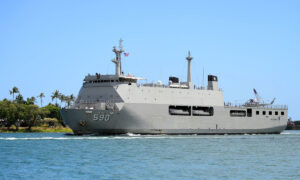
On 10 April 2012, the South American country of Peru announced its decision to procure two units of the Makassar class. To this end, a contract was concluded between South Korea's DaeSun Shipbuilding & Engineering Co., Ltd. in early 2013, which provided for the construction of the two ships at the state-owned Peruvian shipyard SIMA (Servicios Industriales de la Marina S.A.) in Callao with South Korean support at a unit price of USD 60 million. The first Peruvian unit BAP Pisco (AMP-156) was launched on 25 April 2017 and put into service on 6 June 2018. The second unit, BAP Paita (AMP-157), was launched on 9 December 2022 and is expected to enter service shortly. The dimensions of the two units are 122 metres long and 22 metres wide with a fully loaded displacement of 11,394 tonnes. There is space on the well deck for two LCVP landing craft, each 23 metres long. In addition to 157 crew members, 400 marines can be embarked. A Sikorsky SH-3 Seaking helicopter of the Peruvian naval aviation can be accommodated in the hangar, while two more can be parked on the flight deck.
A few years ago, the remote country of Myanmar (formerly Burma) also decided to acquire a Makassar-class unit. The (so far) only unit of the Myanmar Navy bears the name UMS Moattama (1501). It was again built by DaeSun Shipbuilding in South Korea. It was launched in July 2019 and commissioned on 24 December 2019. With a length of 125 metres, the UMS Moattama has a width of 22 metres and a fully loaded displacement of 12,500 tonnes. The ship has a transport capacity of 25 tanks or 22 lorries, two 23-metre LCU landing craft and 520 marines in addition to the crew of 103. The hangar has space for a Russian-made Mil Mi-17 transport helicopter, while the flight deck can accommodate a further two helicopters. The UMS Moattama is currently the flagship of the Myanmar Navy.
On 1 July 2022, the United Arab Emirates Navy signed a letter of intent with PT PAL Indonesia to purchase an enlarged Makassar-class unit. The construction contract worth USD 408 million was finally signed at the IDEX defence exhibition in Abu Dhabi in February 2023. The significantly higher purchase price of the United Arab Emirates unit can be attributed to its more complex technical and electronic equipment (compared to the Asian and Peruvian ships) as well as its larger dimensions (length 163 instead of 122 metres). The first steel cut of the Al Aryah project (this is the project name of the still nameless ship) was carried out on 28 February 2024 in Surabaya.
Stefan Ulsamer is a freelance journalist specialising in marine technology.
Stefan Ulsamer
